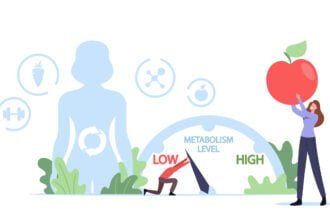
I’m usually a touch overcommitted. There are so many exciting things to be part of now that the connected health marketplace is blossoming. However, that makes it hard at times for me to practice what I preach. Although our Center is not specifically about prevention, we tend to get involved because of our interest in connected health in the fitness market and in the Quantified Self.

I’m usually a touch overcommitted. There are so many exciting things to be part of now that the connected health marketplace is blossoming. However, that makes it hard at times for me to practice what I preach. Although our Center is not specifically about prevention, we tend to get involved because of our interest in connected health in the fitness market and in the Quantified Self.
By far and away, the biggest proliferation of connected health devices has been in the activity monitoring space, so I am inevitably trying, testing, wearing two or three of them at any given time. And they remind me every day how active or inactive I am. 10,000 steps a day is a nice benchmark – most days I get to 5000. 7000 is high. 10,000 is rare. Stated another way, I’m at a plateau in my quest for a healthier lifestyle. How can I get there? Do I have to give up some of the exciting work-related things that keep me a touch overcommitted?
When I first started monitoring my activity, it became quickly apparent to me just how inactive I am on an average day in the office. Meeting after meeting means lots of time in a chair. I just learned of a study from Australian researchers published two years ago that found that spending more than four hours a day in front of a computer or television was associated with a doubling of serious heart problems, even among people who exercised regularly. Stated more dramatically, if you sit for more than 4 hours per day, your risk of heart attack is roughly equivalent to someone who smokes. My own Body Media armband data from a recent Sunday illustrates this principle. I was catching up on computer work in the morning and went out to do yard work in the afternoon. The vertical axis is kilocalories and the horizontal axis time.
You can see just how low the calorie burn is during the first part of the graph (period of inactivity) compared to the second part. When we sit for long periods of time, our body tells our metabolic machinery to make more fat for storage and this contributes to obesity, diabetes, hypertension and risk of heart attack.
So what is the solution?
I’m calling it “small frequent activities.” You can use your activity monitoring data to help you with this. If you are tracking steps, set a reminder on your phone or computer to check your step count a few times/day. Find some activities that you can do which enable you to get in 10 minutes of walking or at least standing. Fit those into your schedule in a way that is not disruptive. Use your step count as a tool to measure success.
This is not to excuse you from setting a work out goal and a longer-term activity goal. Think of daily step count as a batting average and these 10-minute excursions as individual at bats. Both are important to achieving success. But if you work out for 30 minutes per day, and walk an additional 3000 steps, your heart attack risk will be lower if you spread those 3000 steps out in small, frequent activity increments.
Can the same logic be applied to calories taken in? I don’t believe research has been published to confirm it, but intuitively it makes sense. In fact, recently in the New York Times, Claudia Dreifus wrote about a mathematician, Carson Chow, who has built a mathematical model to explain why our country has put on so much weight over the last 20 years. One of the things Chow notes in his model is that, “if you eat 100 calories fewer a day, in three years you will, on average, lose 10 pounds — if you don’t cheat.” In one way, this sounds like useless advice because most of us vary our caloric intake on a given day by way more than 100 calories (there are 100 calories in 8 ounces of soda). But there is something empowering about these data. Dr. Chow has created a simulator that you can access to see how small changes in your diet or activity make a difference long term.
The insight here is to make small adjustments and stick to them. Climb a few flights of stairs each day and don’t put that teaspoon of sugar on your berries in the morning. Take a conference call while walking around your office. Sustained over time these adjustments lead to better health and they are not so overwhelming as the New Year’s resolution of going to the gym or the diet that drops 30 lbs in two months only to see it creep back on over time.
I guess the baseball analogy holds well again. Hitters make adjustments in the middle of the game according to what the pitcher is throwing. They tend to get more hits the second time through the order. And if they do that consistently, their batting average rises.
photo:Yuri Arcurs/shutterstock










